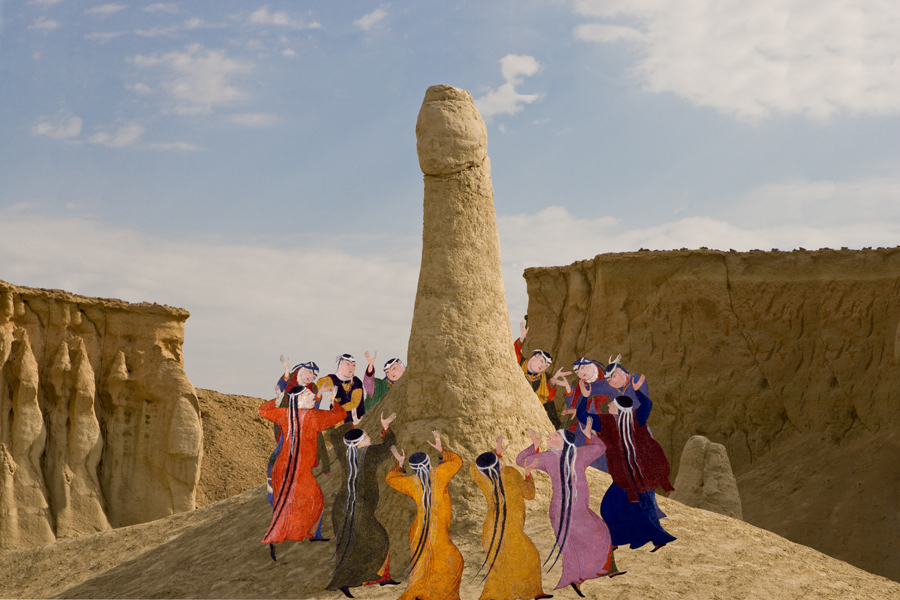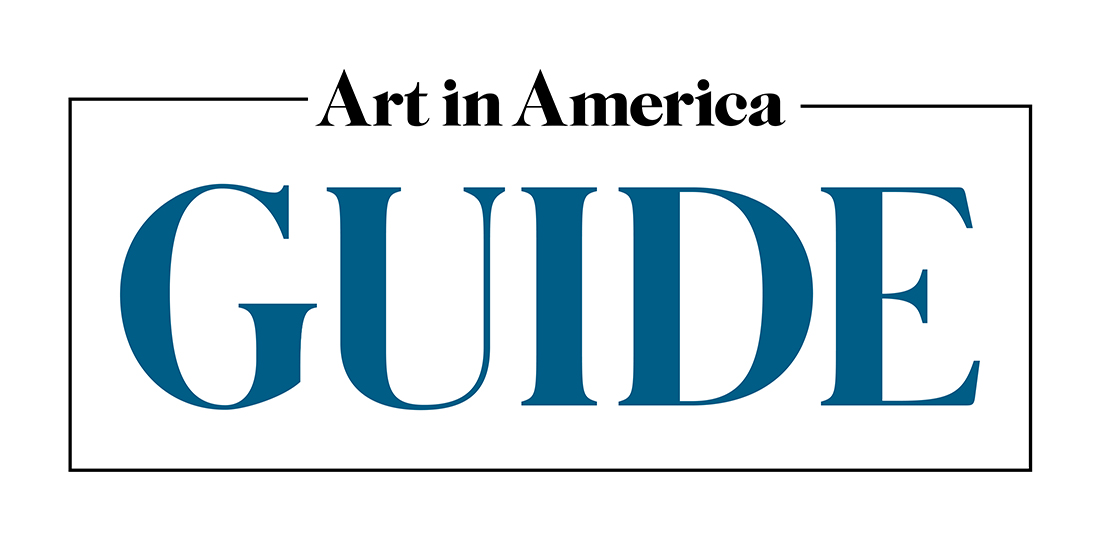
- This event has passed.
The Rule and its Exception, Part I
May 9, 2012 @ 8:00 am - 5:00 pm

The Rule and its Exception
May 9th to May 12th, 2012, All Galleries.
May 19th to June 30th, Vignette Galleries.
Opening Reception: Wednesday, May 9th, 2012, 6:00 to 9:00 pm
SHIVA AHMADI SOODY SHARIFI ROYA AKHAVAN KHOSROW HASSANZADEH
AYAD ALKADHI REZA DERAKSHANI KEZBAN ARCA BATIBEKI POURAN JUNCHI
NEGAR AHKAMI GHASEM HAJIZADEH AFSOON FARIDEH LASHAI SHOJA AZARI
SHAHRAM KARIMI
Deborah Colton Gallery, in conjunction with New York based Leila Heller Gallery, is pleased to present The Rule and its Exception. Drawing from traditions of miniature painting, ornamentation, figuration and calligraphy, this group exhibition presents a series of varied practices that speak to the contemporary realities of many individuals stemming from the region of the Middle East.
Irreverently borrowing from and combining cultures, which span centuries and continents, the works presented in this exhibition are complex in the manner in which they seamlessly layer visual queues from politics, geography, society and art historical references.
Collage, painting, photography, video, digital printmaking come together to form an alternative mapping of social and artistic concerns. This mapping, through the inherent complexity of its structure, resists flattening to simplistic stereotypes, and nor could it be embodied in something as monolithic as a statement or a rule. The selection of artists challenges all categorization, starting from the geographic and social, but perhaps most directly, they challenge the very categorization of artistic mediums.
Shiva Ahmadi’s miniature panoramas develop an intriguing set of symbols and characters, which reference ancient mythology and religious iconography. The scenes depicted are suggestive narratives on hybrid infrastructural backgrounds floating between Esfahani mosques and nuclear reactors. The faceless dwellers of these non-places are tyrant figures, subservient minions, camels and elephants involved in a series of obscure and at times seemingly shady activities.
Soody Sharifi’s most recent digital collages stage strange encounters in Tehrani public spaces where young men on scooters meet warriors armed with sticks, stones and daggers transposed from the pages of old manuscripts and miniatures. The work offers a strange layering of gendered violence across histories all through seemingly playful yet eerily offputting digital collages.
Roya Akhavan works with singular or multiple canvases to present lush compositions, which make use of symmetry and repetition to create vibrant, colorful surfaces. The surfaces are then further labored with thread, highly rendered sections as well as fine line pencil drawing. The resulting imagery is an intriguing array of tattooed guardians, dagger jugglers and motifs, which unlock open ended potential for interpretation in viewers’ imaginations.
Known for his larger than life paintings, which incorporate grungily screen printed Pahlavan and Kushti wrestlers, Khosrow Hassanzadeh now turns his attention to the female figure. The dark streaky prints are replaced with light and loose color pencil work and a layering of paint and imagery is replaced by a focus on lightness and immediacy of gesture. These simple yet captivating nudes are paired with brightly colored repurposed floral wallpaper, which comprise an ornate backdrop. The entire image is then contained within an ostentatious gold frame reiterating the opulence of the poses.
Ayad Alkadhi’s approach to painting is a physical struggle in mark making where strata upon strata of content get buried under one another. The works typically start with a ground of yellowed newspapers pasted onto the canvas, upon which the artist frantically sketches in black and sanguine: bodies, embryos, faces, feces, but also thoughts and scribbled notes. A second layer obscures this phase with a heavy handed a la prima brushwork, then a third phase overlays controlled and contained bright colored outlines, delicate calligraphic lettering and so on. An Iraqi exile, AlKadhi has for several years now been exploring the complexities inherent in negotiating a life in the shadows of conflict.
Reza Derakshani is a painter, musician and performance artist. Born and raised in the rural Northeast of Iran, a fascination with the grandeur and beauty of nature has remained a theme in his large-scale colorful abstractions. Often adhering sand directly to the canvas, Derakshani has a mastery of his materials and is well versed in the language of abstraction. Often very large, his works can at times even become full fledged murals and frescoes.
Turkish artist, Kezban Arca Batibeki creates mixed media paintings which often feature larger than life female figures who range from sexualized nonchalant piles of bodies, to empowered muscular heroines dynamically swinging from trees. Batibeki’s paintings also sometimes stage more elaborate narratives, where diabolique-style plots seem to be in mid unraveling. The medium ranges from paintings incorporating sequins, carpet, embroidery and acrylics, as well as elaborately composed digital photography.
Pouran Jinchi’s densely cluttered calligraphic compositions are exercises in composition and entropy, of taking and shedding shape and of breath and suffocation. Often repeating a singular letter, using a minimal palette of up to 3 or 4 colors and employing repetition and rotation; the works have extraordinary movement, rhythm and charge despite their reductive nature. The work can also be traced back to the traditional Siah-Masq technique of perfecting calligraphy, which consists in the repetition of a letter to the extent of completely saturating the paper with ink.
Through painting and sculpture, Negar Ahkami presents a criticality towards and a fascination with her native Iran and its culture. Melting and softening rigid and erect patriarchal architectures from mosques, nuclear reactors and discombobulated tile work, Ahkami’s world is not dissimilar to a surrealist landscape. Indeed this surrealism speaks to a complicated and at times hard to believe geo-politic, which Ahkami addresses through the employment of Eastern and Western artistic tropes and discourses.
Clearly based on an archive of old photographs, the paintings of Ghasem Hajizadeh often carry the material damages of the overly handled pictures they reference. Aged, dog-eared and yellowed, the works depict characters from an era past and carry within them a sense of loss that is not quite identifiable.
These often broad shouldered female figures dwell on the edges of gender, bending it, reshaping it and casting doubt on the certainty of its segregation.
Afsoon is known for her series of portraits of iconic figures in Iranian, Middle Eastern and international art, culture and society. These digital photo collages draw from pop art, and often feature black and white bust portraits on elaborate and colorful backgrounds comprised of repeated product packaging, album covers and other popular vernacular. The graphically simple portraits range from legendary Iranian singer Googoosh, to Winston Churchill.
Farideh Lashai is one of the seminal painters of a generation of Iranian artists. Her more recent work has seen her move away from the abstract expressionism that she had become so well known for, in order to push the boundaries of her practice into animation. Still serving as the basis of her artistic practice, her paintings have now become backdrops upon which animated figures are projected. Thus the painted sections actively interact with the content of the video aspect of the work, in order to elaborate on short and simple stories which stand as complex metaphors for the historical and political realities, which have plagued Lashai’s native Iran for decades.
Shoja Azari and Shahram Karimi have distinct practices on their own, the first as a video artist and the latter as a painter. Together they have worked on a series of collaborations which merge their respective sensibilities in order to create layered and rich landscapes. These video projections on painted canvases create kinetically active landscapes which draw inspiration from sources as varied as bustling cities to the shifting of the seasons.
The Opening Reception is co-sponsored by the Society of Iranian-American Women for Education (SIAWE), a nonprofit charitable and non political organization dedicated to providing educational support through scholarships and promoting Iranian Culture. A portion of all sales throughout this exhibition will also go to this fine organization.
Leila Heller Gallery, based in New York City, has established a worldwide reputation in both the primary and secondary art markets. Known for an active and innovative exhibition schedule, the gallery’s primary focus is the representation of a group of international contemporary artists, with a specialization in artists from the Middle East. Our mission is to inspire vital dialogues among artists, curators, collectors and critics, and to provide a forum where these exchanges can take place.
Deborah Colton Gallery, based in Houston, is founded on being an innovative showcase for ongoing presentation and promotion of strong historical and visionary contemporary artists world-wide, whose diverse practices include painting, works on paper, sculpture, video, photography, performance and conceptual future media installations. The gallery aspires to provide a forum through connecting Texas, national and international artists to make positive change.
